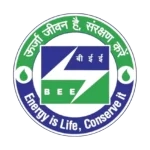
An essential part of a solar power system is a solar transformer, commonly referred to as a solar inverter or photovoltaic (PV) inverter. Its main job is to change the solar panels’ direct current (DC) electricity into alternating current (AC), which can be utilized to power buildings, commercial buildings, and the electrical grid.
Solar transformers are crucial because solar panels generate DC electricity, while most of the appliances and equipment we use require AC electricity. The inverter bridges this gap, ensuring that the electricity generated by solar panels is compatible with our electrical infrastructure.
These transformers come in various types, including string inverters, microinverters, and power optimizers, each with its unique advantages. String inverters are typically used for larger solar installations and are cost-effective. Microinverters and power optimizers, on the other hand, are often employed in smaller residential systems and provide benefits like increased energy harvest and monitoring capabilities.
Energy losses during the conversion process can affect the overall performance of the solar power system, hence efficiency is a crucial factor in solar transformer design. Transformers of the highest calibre are made to reduce these losses.
In addition, a lot of contemporary solar transformers have monitoring and intelligent functions. These enable consumers to monitor the operation of their solar panels and rapidly pinpoint any flaws, which improves system maintenance and aids in energy optimization.
In summary, solar transformers are essential components in solar power systems, enabling the conversion of solar energy into a form that can be used to power homes and businesses. Their efficiency, type, and monitoring capabilities play a crucial role in the effectiveness and reliability of solar installations, contributing to the growth of renewable energy sources.



WhatsApp us